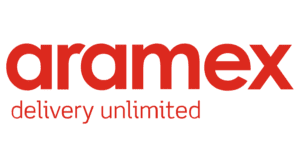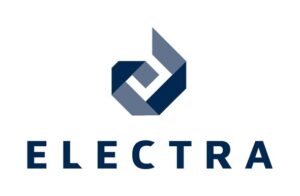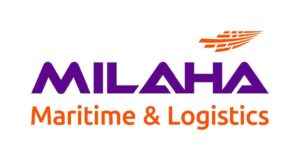
Online Lean Six Sigma Green Belt Course
Lean Six Sigma Green Belt Certification
Only €849.00 (view payment plans)
Reach your potential! Achieve more with Lean Six Sigma Green Belt Certification.
Level up your leadership, project management and problem-solving skills.
Only takes 60 seconds to start
Pick a time from our calendar
Green Belt Course Benefits
Self-Pace Flexible Online Course | Learn at your own pace
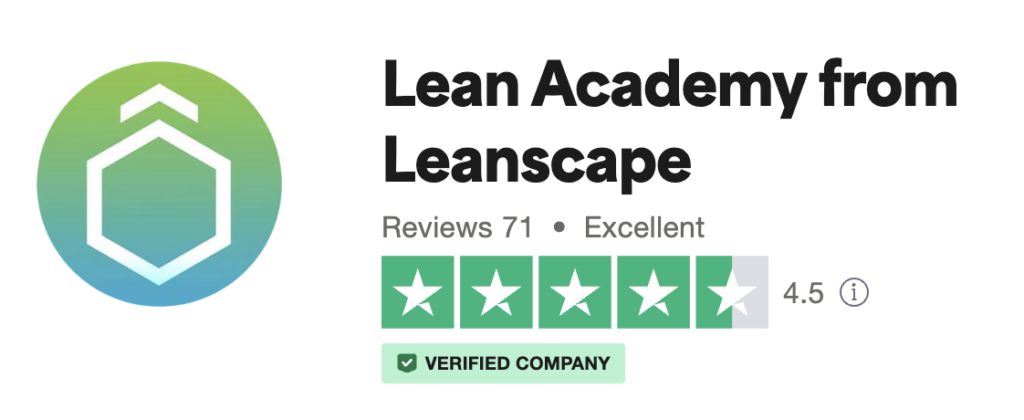
- Learn how to solve complex business problems and acquire the tools to manage large projects teams using the Lean Six Sigma Green Belt "Body of Knowledge"
- Learn how to breakdown complex business problems into a data-driven solution for all areas of your team and business
- Over 120+ On-Demand video lessons, open-book quizzes, webinars and assignments.
- Get 1-2-1 coaching to deliver a real-world improvement project
- Upon completing the course, you´ll receive a fully recognised Lean Six Sigma Green Belt Certificate
- Become a fully certified Lean Six Sigma Green Belt professional at the end of the course and start accelerating your career.
Only takes 60 seconds to start
Pick a time from our calendar
Learning Objectives
- Fast-track your leadership career with the capabilities of a change-agent who can successfully manage complex corporate solutions at all levels of an organisation.
- Become an expert in problem-solving and process improvement techniques implemented in world-leading companies such as General Electric, Toyota, Motorola, Amazon, Pfizer and many more.
- Effect immediate results through the application of practical tools in reducing waste, improving efficiency, increasing productivity and hyper-focusing on customer value.
- Training with tangible results. We train you so that you can identify project management and identify the projects that will deliver a solid return on investment for your business. We coach you to make sure you maximise your impact.
- Complete the online course, interactive materials, certification exam and self-directed projects to receive our Accredited Lean Six Sigma Green Belt Certification.
Only takes 60 seconds to start
Pick a time from our calendar

What is included?
- Only £849 (unlimited access)
- Access to 120+ Online Modules
- Free copy of Lean Six Sigma & Minitab (worth $65)
- Quizzes & assignments with 1-2-1 feedback
- Certificate on Completion (CPD Certified)
- Access Live Webinars (and recorded sessions)
- 1-2-1 Project Mentoring & Coaching
- Access to our Lean Academy Community
Only takes 30 seconds

Enroll Today
Payment plans & invoices are available
6 Month
€142
6 Months Payment Plan
- Full Access to our Lean Six Sigma Green Belt Course, including online courses, assignments, 1-2-1 project coaching, exam and final Green Belt Certification
Full Course
€849
One Off Payment
- Full Access to our Lean Six Sigma Green Belt Course, including online courses, assignments, 1-2-1 project coaching, exam and final Green Belt Certification
All Access Pass
€1499
All Courses
- Get lifetime access to all Lean Six Sigma courses — White, Yellow, Green, Black Belt, and more — plus tools, updates, and exclusive content for a one-time payment of €1,499. No subscriptions. Learn and certify at your own pace, forever. See all memberships
Rating 4.7 (990)
Our Experience Is Your Advantage

Leanscape provided a full course in my Lean Six Sigma Yellow Belt experience with a solid online course and good assignments to get into it. They also provide 1-on-1 coaching and bring the Six Sigma project to life.
Hans Laurien

by studying online with such Flexible schedule really helped developing my skills without being attached to a specific timeline, the full course provided an excellent information in a very simple way specially for someone who isn't familiar with the concept of six-sigma.
Dima Al Rei

After completing the Fundamentals of Lean, I jumped onto the Yellow Belt and once again, the package is very well put together and is well supported by Reagan. I would recommend this to anyone wishing to improve the way they think and work.
John Williamson

The instructor and course are excellent! The material is amazing and didactic, with real-life examples! Really met my expectations, I definitely recommend it!
Beatriz Marinho

Lean six sigma is the wonderful platform to polish professional skills to select the project based on current working environment is the best part of the course which give benefit to students as well as beneficial for organisation.
Muhammad Abdullah
How it works
Each course combines online learning, assignments & projects
Online Learning
Complete the self-paced flexible learning that fits around your schedule.
Assignments
As you go through the course there are a range of assignements to put theory into practise.
Exam & Project
Pass the online exam and submit your final project (with mentoring throughout the course).
Certification
Once all completed, reveive your Leanscape Lean Six SIgma Green Belt Certificate.
Only takes 60 seconds to start
Pick a time from our calendar
Business management skills will you acquire
Book a 15-mins call with one of our team to find out if the Black Belt is right for you.
Analytical Thinking
Learn to improve and control data collection and analytical tools to deliver business-critical insights and leverage data-led solutions to identify impactful business improvements.
Complex Problem Solving
Develop the mindset and capability to attack large and complex business challenges and deliver improvement throughout the business.
Critical Thinking
Develop your critical thinking tool kits to turn business challenges into opportunities to navigate the constantly changing business landscape.
Strategic Thinking
Expand your strategic mindset to link customers, processes and business results to identify strategically focused projects for long-term growth.
Business Transformation
Leverage Lean Thinking to identify organisation-wide improvement initiatives into transformation programs.
Leadership and Influence
Build your change management, project leadership and influencing skills to align people across the organisation and build high-performing teams through the growth mindset.
Green Belt Syllabus Course Overview
What is Lean Six Sigma Green Belt?
Lean Six Sigma Green Belt is a professional certification that recognizes individuals who have an understanding of Lean Six Sigma methodologies, tools, and techniques. These individuals have a detailed knowledge of the Define, Measure, Analyze, Improve, Control (DMAIC) process, and are able to use Lean Six Sigma practices to identify and solve problems in any organization.
Lean Six Sigma Green Belts also have the ability to lead improvement projects and to mentor team members on the use of Lean Six Sigma practices.
An Introduction
0.1: An introduction to the Course
In this opening session, we introduce you to the course, the format, how to navigate your way around and ensure you are ready for the remainder of the course. We will also discuss certification requirements to ensure you are ready to go!
0.2: Benefits of Lean Six Sigma
Learn about what are the benefits of Lean and Lean Six Sigma and how have other world-class organisation used Lean to drive exceptional results. What are the key reasons these companies are successful and how through this training can you begin to apply this knowledge to your career.
0.3: Green Belt Projects
Finally in this session, we help you begin to identify what types of project are the best for running as Green Belts. We look at the tools and prioritisation matrix that can be used to identify the best projects with the largest business impact.
What percent of engaged employees are looking for opportunities? What about for disengaged and actively disengaged employees?
37% of engaged employees are hunting for jobs or looking for opportunities. 56% of disengaged and 73% of actively disengaged employees are looking for new jobs. (Source: Gallup 2017)
What percent of businesses think of engagement as a top challenge?
36% of businesses see engagement as their number one challenge ahead of employee retention/turnover, recruitment, succession planning, culture management and performance management. (Source: GloboForce 2016)
What percent of employees are engaged with their job if their duties are aligned with the company’s values and mission?
Eight out of 10 employees felt more engaged when their work was consistent with the core values and mission of their organization. (Source: IBM 2017)
If a company puts more money in employee engagement, will they see a return on investment?
Most likely, as increasing the employee engagement budget by 10% can increase profits by $2,400 per employee annually. (Source: Inc 2016)
What percent of employees see empowerment as key to their engagement?
70% of employees surveyed prioritized being empowered to take action on the job when an issue or opportunity presents itself as a vital component of their engagement. (Source: SHRM 2016)
07: The Improve Stage
What is the right way to test solutions and how to build a pilot? How do I get the team involved to generate improvement ideas and then how do I know which ones to do first? These are some of the questions we will answer as we explore idea generation through to running successful pilots and implementing solutions.
We will look at the following elements:
- How to avoid going with the first idea and generate lots of potential improvement ideas
- How to asses ideas against each other to identify the best fit
- What is Just In Time and how does it support business improvement
- Know how to understand risks of your proposed solution and build in countermeasures early on
- When to use 5S, SOP’s and Visual Management to support improvements and changes
- What are successful pilots and how to run them
- Learn how to use the Lean Startup approach to be more innovative and drive innovation
08: The Control Phase
The risk with all changes is that over time, teams resort back to what they did before. So how do you overcome this and how do you ensure that the changes made stay implemented. In the control phase we look at how to not only ensure long term sustainability but also how to close out your project, sign off the benefits and get ready to celebrate with your team.
We will look at the following elements:
- Using ongoing measures to maintain your solution
- Building KPI’s and charts to monitor performance in a sustainable way
- What makes change successful and tools and techniques for driving daily progress
- How to quantify the change and gain the financial accumum to measure benefits the right way
- Finally, how to close out project, delivery report outs and ensure you celebrate!
09.1: Change Management
No project has ever succeeded without making people change as well. Change is not that easy as you know. This module is designed to look at some of the industry best practises on how to make change happen and then what to do to build the culture change required in our businesses today.
We will cover topics such as:
- What is change management and how does it impact companies
- How to build high performing teams
- Key skills required to manage change and understand the change curve people go through
- When to be directive or supportive in your management style
- What is the role of a Lean Six Sigma Green Belt when it comes to managing change and projects
- How to build the foundation of change and make sure you cast the right shadow
09.2: Growth Mindset
Driving change is also about developing your leadership capabilities. We will be running an entire webinar focused on leadership and the growth mindset to develop your capabilities and leadership skills. Learn how mindfulness and high touch leadership can build high performing teams.
Before moving on, this section requires a final exam once you have completed the multiple choice quiz with an 80% pass mark. Congratulation! You are not Lean Six Sigma Green Belt Certified! However, this course includes the opportunity to apply the DMAIC problem-solving approach to a real-world problem you and your business are facing. You can make real change happen using the tools, techniques and methods you have learned through this course, focusing on your chosen project. But you are not alone. We provide 1-2-1 coaching/mentoring, project reviews and advice to support you in the first Lean Six Sigma Green Belt project. If you choose to complete a project, you will also qualify for our Advanced Lean Six Sigma Green Belt Certificate. This is only provided to candidates who meet the training and the project, and for us, it shows you not only have the theory but you are a capable change agent that we are willing to recommend to our community. You have up to 9 months to complete your project after the end of the course.
At this point, we will wrap up the course, reflect on the key learnings, key takeaways and celebrate your success.
Follow each of our instructor led Green Belt Course modules at your own pace.
Every section builds your knowledge and understanding of key business improvement tools.
Meet your coaches
Reagan Pannell,
Founder of Leanscape
“As part of our GB Training, each candidate will get dedicated support from one of our Lean experts. They will support with projects, help you understand the key tools and support every candidate throughout the change management process”
4.7 out of +990 reviews
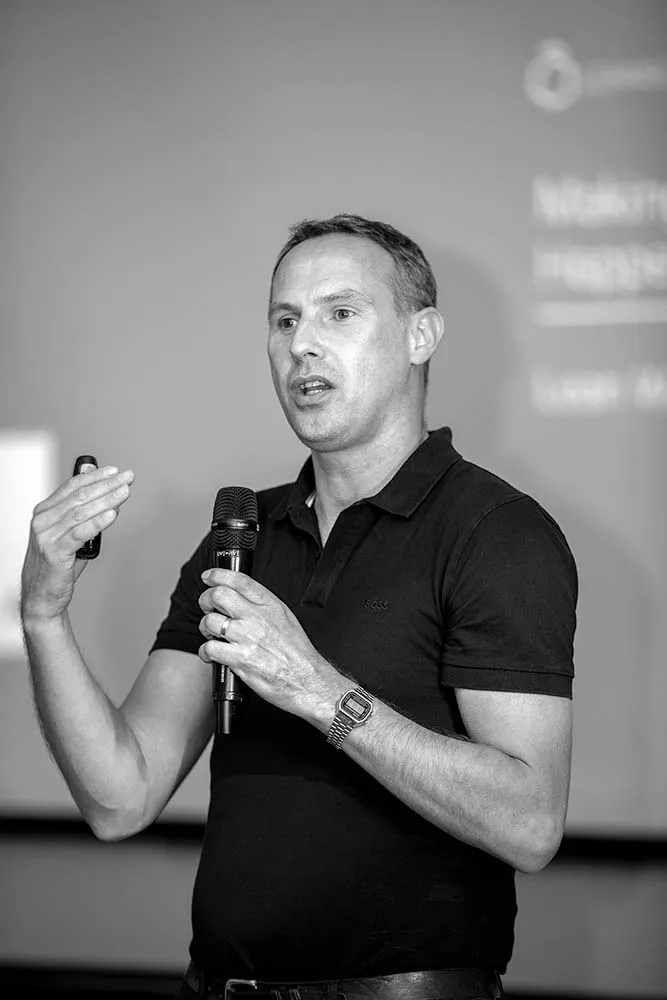
Green Belt Syllabus Course Overview
What is Lean Six Sigma Green Belt?
Lean Six Sigma Green Belt is a professional certification that recognizes individuals who have an understanding of Lean Six Sigma methodologies, tools, and techniques. These individuals have a detailed knowledge of the Define, Measure, Analyze, Improve, Control (DMAIC) process, and are able to use Lean Six Sigma practices to identify and solve problems in any organization.
Lean Six Sigma Green Belts also have the ability to lead improvement projects and to mentor team members on the use of Lean Six Sigma practices.
An Introduction
0.1: An introduction to the Course
In this opening session, we introduce you to the course, the format, how to navigate your way around and ensure you are ready for the remainder of the course.
We will also discuss certification requirements to ensure you are ready to go!
0.2: Benefits of Lean Six Sigma
Learn about what are the benefits of Lean and Lean Six Sigma and how have other world-class organisations used Lean to drive exceptional results.
What are the key reasons these companies are successful and how through this training can you begin to apply this knowledge to your career.
0.3: Green Belt Projects
Finally, in this session, we help you begin to identify what types of projects are the best for running as Green Belts.
We look at the tools and prioritisation matrix that can be used to identify the best projects with the largest business impact.
Module 01: What is Lean Thinking
1.1: What is Lean
To understand how to build Lean processes, we must understand what Lean means and how we can apply Lean across what we do to drive a difference.
We will explore what Lean is, what it is not, and where Lean fits within the current business climate.
1.2: What are the keen Lean Principles?
The principles behind Lean are fundamental to core fundamentals for business excellence and building operational excellence.
Every industry has a way of doing business, but the principles behind Lean are relevant across all sectors, helping build the long-term growth and culture of an organisation.
1.3: How to identify wastes and inefficiencies in our processes
Learning to see inefficiencies does not start when something obvious goes wrong.
As an expert in Lean thinking, you will be able to watch processes, understand the inefficiencies, and identify waste within every process.
With most processes having almost 80% waste, we cannot afford to ignore it.
1.4: How to be process-centered in our thinking
To build new products or services and fix existing ones, you have to be process-centered and process-focused.
Learning the art of process thinking to build improved or new processes is a skill that can be developed by leveraging the Lean principles.
1.5: Core Lean Tool Kit
Understanding what tool to use, when and which tool will begin with the best and most significant result is critical to making lasting change happen.
You will learn the critical Lean tools such as the Value Stream Mapping or 5S, but you will also learn how to get good at brainstorming, SCAMPER, Assumption busting, and prioritisation of activities while developing skills that can be applied across any business and any role.
1.6: Using A3 Problem Solving
Toyota taught its leaders how to solve issues on a single sheet of A3 paper, and we will show you how to do it.
This tool brings together visual management, change management, and problem solving into an unbelievably powerful problem-solving format that you can use for the rest of your career to solve business challenges – at any level.
Module 02: Introduction to Six Sigma
2.1: What is Six Sigma?
So what does Six Sigma mean? In this module, we will explore the background of Six Sigma, where it came from, and what it means to business today.
Finally, we will examine the impact of poor sigma levels in business operations and how the Six Sigma approach can enable world-class performance.
2.2: What is the difference between Lean & Six Sigma?
With so much talk about Lean and Six Sigma, consultants, businesses, and leaders are often one or the other.
But why is that? And should it be the case?
2.3: Introduction to the DMAIC Problem Solving approach
The DMAIC methodology (Define, Measure, Analyse, Improve, Control) phases are central to the Six Sigma project approach,
and we will show you how DMAIC, and DMADV, can provide a structure to solve almost any project you will ever work on.
So if you are ever lost in your project and what to do next, the approach we will show you and teach you helps you walk your way through any project,
keeping it well structured so that you can be creative.
Module 03: Identifying Opportunities
03: The Define Stage
Have you ever identified a project to work on but found it hard to keep the project on track and within scope?
Have you ever worked on a project where senior management are just not supportive or interested?
Well, in the Define phase, we are going to show you how to build projects that the business wants to do, needs to do, and supports you to do.
We will look at the following elements:
- Building Problem/Goal Statements
- Learning how to quantify the cost of poor quality in your business/operations
- Understanding customers and linking projects to burning customer needs
- How to align teams behind projects including stakeholders
- What makes teams successful and how to build the right team with the right structures
- Getting business approval and support
Module 04: How to Baseline Capabilities
04: The Measure Phase
Ever got to the end of a project and had difficulty proving it was a success? Even heard about a project someone says they did,
but you are just not sure if anything actually improved? More often than not, this is because they jumped, skipped, or just simply did not know about the Measure phase.
If you want to improve something, you have to learn how to baseline performance.
In the Measure phase, we look at how we should identify the data we need, how to capture and extract that data, and ensure its quality before applying tools to build high-quality performance metrics and KPIs.
We will look at the different measures you can use to baseline performance so you can prove how good performance was before you started.
We will cover key topics such as:
- How to build KPIs and cascade them across teams and projects
- How to use basic statistics to offer more insights and depth into your data
- What you need to do to ensure the data you capture is quality data and not biased
- The different types of data and why some types of data are better than others
- Skills to learn how to interpret data, the distributions, and which tools can be used to deliver insights
- We will look at how to use graphical analysis tools to represent data clearly
- How to understand if your process is actually capable of what you need
- And finally, how to translate this into baseline metrics, a foundation for success
Module 05: Basic Statistics Introduction
05: An Introduction to Basic Statistics
Ever get lost or confused when people talk about statistics? Well, this short module is to help simplify the statistics, the jargon,
and help us learn how to use statistics sensibly in the real world. It will break down the concepts so you can feel confident presenting data
and using data to challenge business processes.
Module 06: Analyse Root Causes
06: The Analyse Stage
Have you ever seen a project team implement a solution that actually has zero impact on the problem? Or teams that say they have fixed the issue
but then the same issue happens over and over again? In the Analyse phase, we are going to show you how to make sure this does not happen to you.
How? Because of the way we use people’s experience, process thinking, and data analysis to identify the right “root cause” that is worth solving.
We will look at the following elements:
- How to analyse processes for improvements using Value Stream Mapping, Process Mapping, Flow/Pull
- How to identify critical bottlenecks in your operations
- Root Cause Analysis tools such as 5 Whys, Pareto, Fishbone
- How to manage risks using the FMEA tool
- When to use Graphical Analysis to represent key process issues
- What is Confidence intervals and hypothesis testing
- What is the benefit of regression analysis and how to use it
- And finally, how to prioritise your root causes
Module 07: Solutions & Creative Thinking
07: The Improve Stage
What is the right way to test solutions and how to build a pilot? How do I get the team involved to generate improvement ideas and then how do I know which ones to do first?
These are some of the questions we will answer as we explore idea generation through to running successful pilots and implementing solutions.
We will look at the following elements:
- How to avoid going with the first idea and generate lots of potential improvement ideas
- How to assess ideas against each other to identify the best fit
- What is Just In Time and how does it support business improvement
- Know how to understand risks of your proposed solution and build in countermeasures early on
- When to use 5S, SOPs, and Visual Management to support improvements and changes
- What are successful pilots and how to run them
- Learn how to use the Lean Startup approach to be more innovative and drive innovation
Module 08: Building Sustainable Change
08: The Control Phase
The risk with all changes is that over time, teams resort back to what they did before. So how do you overcome this and how do you ensure that the changes made stay implemented?
In the Control phase, we look at how to not only ensure long-term sustainability but also how to close out your project, sign off the benefits, and get ready to celebrate with your team.
We will look at the following elements:
- Using ongoing measures to maintain your solution
- Building KPIs and charts to monitor performance in a sustainable way
- What makes change successful and tools and techniques for driving daily progress
- How to quantify the change and gain the financial accumulation to measure benefits the right way
- Finally, how to close out project, deliver report outs, and ensure you celebrate!
Module 09: Making Change Happen
09.1: Change Management
No project has ever succeeded without making people change as well. Change is not that easy, as you know. This module is designed to look at some of the industry best practices on how to make change happen
and then what to do to build the culture change required in our businesses today.
We will cover topics such as:
- What is change management and how does it impact companies
- How to build high performing teams
- Key skills required to manage change and understand the change curve people go through
- When to be directive or supportive in your management style
- What is the role of a Lean Six Sigma Green Belt when it comes to managing change and projects
- How to build the foundation of change and make sure you cast the right shadow
09.2: Growth Mindset
Driving change is also about developing your leadership capabilities. We will be running an entire webinar focused on leadership and the growth mindset to develop your capabilities and leadership skills.
Learn how mindfulness and high-touch leadership can build high performing teams.
Module 10: Projects & Assignments
Before moving on, this section requires a final exam once you have completed the multiple-choice quiz with an 80% pass mark. Congratulations!
You are now Lean Six Sigma Green Belt Certified! However, this course includes the opportunity to apply the DMAIC problem-solving approach
to a real-world problem you and your business are facing. You can make real change happen using the tools, techniques, and methods you have learned
through this course, focusing on your chosen project. But you are not alone. We provide 1-2-1 coaching/mentoring, project reviews, and advice to support
you in the first Lean Six Sigma Green Belt project.
If you choose to complete a project, you will also qualify for our Advanced Lean Six Sigma Green Belt Certificate. This is only provided to candidates
who meet the training and the project requirements, and for us, it shows you not only have the theory but you are a capable change agent that we are
willing to recommend to our community. You have up to 9 months to complete your project after the end of the course.
Module 11: Course Conclusion
At this point, we will wrap up the course, reflect on the key learnings, key takeaways and celebrate your success.
Follow each of our instructor led Green Belt Course modules at your own pace.
Every section builds your knowledge and understanding of key business improvement tools.
Our Green Belt Course
The ultimate fast-track for future leadership.
Our internationally recognised Lean Six Sigma Green Belt training is designed for senior management, executive directors and individuals hallmarked for corporate leadership across all business sectors.
You can register and get started today with our 15-day money-back guarantee.
Our Lean Six Sigma Green Belt is an in-depth training program that will immerse you in the practical implementation and management of Lean Six Sigma problem-solving methodology and business principles. This course will equip you with the knowledge of what underpins value in business, process-design analytical skills to deconstruct complex problems and the practical techniques to implement change and drive innovation.

Get Your Lean Six Sigma Green Belt Certificate (example)
Our Accredited Lean Six Sigma Green Belt Certification training provides the essential skills required of leaders who will not be rendered obsolete in the rapidly changing environment of business today.
Frequently Asked Questions
Accredited Lean Six Sigma Green Belt Certification Online
How Long Does the Lean Six Sigma Green Belt Course Take?
The Green Belt Lean Six Sigma Certification program takes approximately 40 hours of online material plus 4 to 6 months of project time to deliver a real-world project. You will have access to the course for 12 months, but we recommend you complete the course within 3 to 6 months.
Is Lean Six Sigma Green Belt Difficult?
The Lean Six Sigma Green Belt course is an excellent test of your analytical, numerical and change management skills. It is a complete business course that covers a wide range of core business topics, from business case studies to managing teams and data analytics. The great news is that we have all the material explained, so if you work through the course, we will build your knowledge step by step.
How to get Lean Six Sigma Green Belt Certification
To become Lean Six Sigma Green Belt Certified, you must complete the online training modules, pass the quizzes and end exam and deliver a real-world improvement project using the tools and methods. We coach and mentor you through the project part so that you will have help throughout the journey.
When do I get my Lean Six Sigma Green Belt Certificate?
The Lean Six Sigma Green Belt Certificate is given once you have completed the entire course – the online training and the real-life project. If you cannot complete a real-life project, we may offer a simulated project in some circumstances. Please get in touch if you have further questions.
Who is Six Sigma Green Belt Certification for?
The Lean Six Sigma Green Belt Certification is for team leaders, managers, directors and senior business leaders looking to continually drive change, uplift performance or level up their teams.
What if I can not attend the webinars?
All our webinars are recorded. So as long as you register for a webinar, you will receive a recorded copy from watching when it is most convenient for you.
Does Lean Six Sigma Green Belt Expire?
No, the Lean Six Sigma Green Belt certification does not expire. Once you have completed the certification process and have been awarded the Green Belt certification, it will remain valid for life. However, organizations may require periodic recertification, depending on the standards and regulations set by them. This is why it’s imperative that once certified, you stay up to date with the latest advancements in Lean Six Sigma and participate in continuing education activities to remain current and stay certified.
What Does Lean Six Sigma Green Belt Mean?
Lean Six Sigma Green Belt is a certification program that provides professionals with the knowledge, skills and tools to improve processes, increase efficiency and reduce costs. It emphasizes the use of data-driven approaches, process improvement and problem-solving skills to achieve organizational objectives and is suitable for individuals in any industry. A Lean Six Sigma Green Belt is a highly trained individual who is knowledgeable in the core Lean Six Sigma methodology and tools, and is able to manage successful process improvement and cost-saving projects.
Is A Lean Six Sigma Green Belt Worth It?
Yes, a Lean Six Sigma Green Belt certification is worth it. The Lean Six Sigma methodology is an internationally recognized and certified system designed to help businesses and organizations improve efficiency, reduce costs, and increase profitability. A Lean Six Sigma Green Belt certification is an essential step in the Lean Six Sigma process and provides individuals with the knowledge, skills, and tools they need to implement the methodology effectively. Furthermore, having a Lean Six Sigma Green Belt certification can help individuals increase their job prospects, open up new opportunities, and make them more attractive to potential employers.
What Is The Hardest Part About Being A Lean Six Sigma Green Belt?
The hardest part about being a Lean Six Sigma Green Belt is balancing the technical and managerial aspects of the role while applying the six sigma tools learned in the course. Green Belts must understand and interpret the data they collect while having the leadership skills to coach and guide the team members effectively. Additionally, Green Belts must be able to analyze and understand the data and then use the insights to drive process improvement initiatives. This requires a unique blend of technical and managerial skills and can be challenging for those who are newer to the Lean Six Sigma methodology.
Which course is right for you?
There are several Lean Six Sigma courses available, ranging from introductory to advanced levels.
Lean Six Sigma White Belt
- Purpose: Introduction to basic concepts and terminology.
- Audience: Beginners or those new to Lean Six Sigma.
- Focus: Overview of methodology and quality improvement applications.
Lean Six Sigma Yellow Belt
- Purpose: Learn fundamentals, basic data analysis, and problem-solving skills.
- Audience: Individuals looking to advance to Green Belt certification.
- Lean Six Sigma Green Belt
- Purpose: Deepen knowledge and manage larger projects.
- Audience: Those who have completed the Yellow Belt course.
Lean Six Sigma Black Belt
- Purpose: Develop leadership skills to manage and lead larger projects.
- Audience: Individuals who have completed the Green Belt course.
Lean Six Sigma Master Black Belt
- Purpose: Learn advanced concepts and handle complex projects.
- Audience: Those who have completed the Black Belt course.
Key Considerations for Choosing a Certification
- Skills and Experience: Match your current knowledge and abilities to the course level.
- Project Scope: Consider the size and complexity of the projects you will work on.
- Expertise Required: Assess the level of expertise needed to achieve your goals.
- Career Path: Start with the certification that aligns with your long-term objectives.
Essential Skills for Success
- Ability to analyze and understand data.
- Use insights to drive process improvement initiatives.
- Blend of technical and managerial skills.




